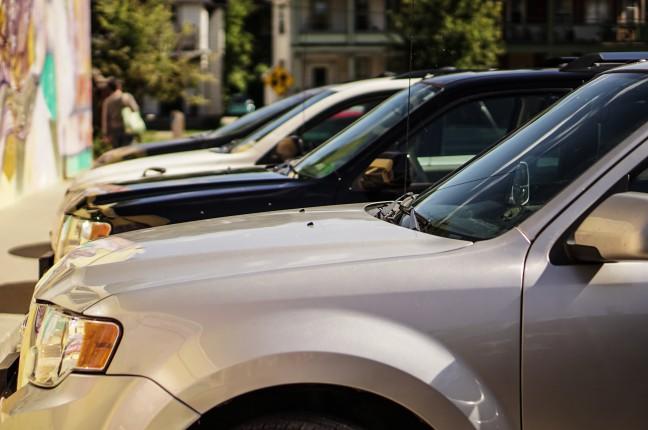The University of Wisconsin Traffic Operations and Safety Lab is studying autonomous vehicle technology using a new autonomous shuttle called the Badger.
The Badger was created through a collaboration between UW, Gateway Technical College and the city of Racine, director of the TOPS lab David Noyce said. The official vehicle was expected to arrive Feb. 14, and the TOPS lab hopes to begin testing the vehicle this spring.
Racine is a smart city, meaning it aims to use technology to increase the quality of life for citizens. Noyce said Racine Mayor Cory Mason helped fund and support the project.
Associate director of the TOPS Lab Andi Bill said Mason has been working with the team to envision where autonomous vehicles could fit into the city’s fleet in the future. The future options for the technology in the Badger could transfer to vehicles used for purposes ranging from transit to snow plowing, Bill said.
The distant future of autonomous vehicle technology is unknown, but Bill said she expects to see a larger number of partially autonomous vehicles on the road.
TOPS managing director Steven Parker said future applications could involve long-haul freight. Some researchers have considered automating stretches of the freight network to support overworked truck drivers and the supply chain. The vehicles could drive long distances of the route, but human drivers could take over to pick up or drop off cargo.
One major benefit of autonomous vehicles is the potential for reduced fatalities on the roadway. While safety features within vehicles have improved over the past 50 years, Parker said there is only so much that can be done within the vehicle. Using connected autonomous vehicles offers an opportunity to push fatalities on the roadway down even further, Parker said.
The Badger is a low-speed shuttle that travels under 30 miles per hour, Noyce said, and according to Parker, it still requires a safe driver that can take over at any time.
“It has its limitations, but nevertheless it’s full of technology,” Noyce said. “It allows us to explore many, many questions that we have on just how these vehicles think, how they communicate, what type of data it collects, how we can use that data efficiently.”
The vehicle is equipped with a combination of sensors and GPS for navigation, Parker said. The Badger uses GPS to ensure it is staying on a planned route. It also uses radar and LiDAR, or laser sensors to detect unplanned events like pedestrians and other vehicles.
The research team will use onboard cameras for research, Parker said, but in the future, they could be used as another type of technology to detect obstacles on the roadway.
Noyce hopes the team can use the data collected from the Badger to answer questions from the team and the city before actually implementing autonomous vehicles on the roadway.
Another consideration for the future of autonomous vehicles is support for people with poor access to the community, Noyce said. The TOPS Lab has considered using the technology to help people get to critical medical appointments at the UW Hospital, Noyce said.
Despite the wide range of future options for autonomous vehicle technology, Parker said the TOPS lab is currently focused on using information from the Badger to provide access to the transportation system for communities like retirement homes.
But, there are many challenges to surmount before autonomous vehicles can actually provide these services. Some of these challenges revolve around edge cases, Parker said — these can include fog, snowstorms, farm equipment and wind.
The TOPS Lab is also researching construction, another edge case. The lab is working under a federal highway grant to help develop the Workzone Data Exchange Program, which would allow autonomous vehicles to collect information about changes to roadways, Parker said.
But, the largest challenge of implementing autonomous vehicles may be earning public trust and acceptance, Parker said.
“Part of what we’re doing with the Badger in Racine is just starting to demonstrate its capability on public roadways … to expose the community to these technologies,” Parker said. “To a certain extent everything we do is perceived by the public and we want to make sure that we’re operating it in a safe way so that we can start to essentially introduce these technologies … in a way that instills confidence in the public.”
The TOPS lab doesn’t just research autonomous vehicles — it also has a major focus on connectivity between them. Connected autonomous vehicles, Parker said, make roadways even safer by increasing visibility.
Connectivity could be used to detect traffic around corners or approaching pedestrians blocked from the car’s view. They could also improve the flow of traffic on the roadway, reducing traffic jams, Parker said.
“There’s always still limitations to sensors that are localized on the vehicle,” Parker said. “It’s really that blend of connected and automated vehicle technology where we believe is the most promise.”


